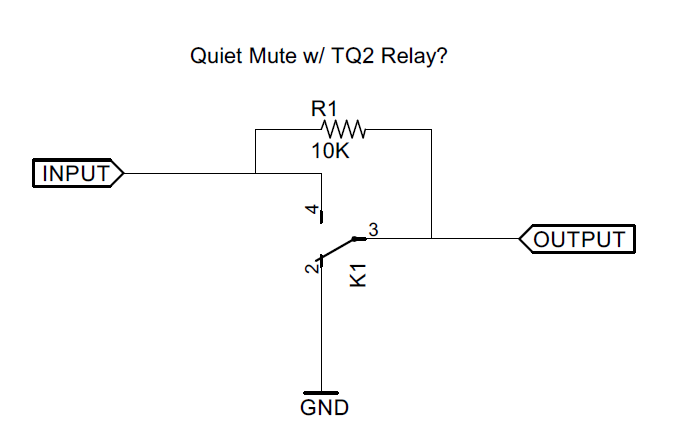Bo Deadly
Well-known member
I need a mute circuit so I came up with the following:

But a cursory search on the Net and in books shows circuits that are quite different. Is the above circuit flawed in some way?
It seems to me the 10K should minimize the effect of a DC offset causing a pop noise. This circuit would be on outputs so there should not be significant gain after the mute. I think I would rather live with a little pop noise than with the distortion of a soft changeover JFET circuit.
Thoughts?

But a cursory search on the Net and in books shows circuits that are quite different. Is the above circuit flawed in some way?
It seems to me the 10K should minimize the effect of a DC offset causing a pop noise. This circuit would be on outputs so there should not be significant gain after the mute. I think I would rather live with a little pop noise than with the distortion of a soft changeover JFET circuit.
Thoughts?
































